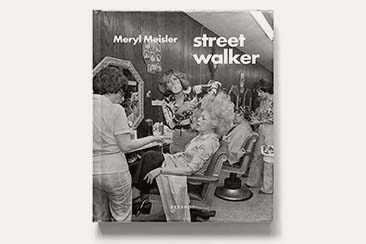In today’s fiercely competitive job market, where every application is scrutinized with a fine-tooth comb, your resume serves as your initial handshake with potential employers. It’s not merely a document listing your qualifications; rather, it’s a strategic tool that can make or break your chances of landing your dream job.
The formatting of your resume plays a pivotal role in shaping that crucial first impression. It’s not just about the content; the layout, design, and organization of your resume can significantly influence its effectiveness in capturing attention and securing coveted interview opportunities.
In this comprehensive blog post, we’ll delve deep into the intricate world of resume formatting, unraveling its nuances, and equipping you with actionable insights to craft a standout resume that commands attention in today’s competitive landscape.

The Importance of Resume Formatting: Elevating Your Professional Brand
When it comes to crafting a resume, many job seekers understandably focus primarily on the content—their qualifications, experiences, and achievements. However, the formatting of your resume plays an equally crucial role in shaping recruiters’ perceptions of your candidacy and determining whether you make it past the initial screening stage. Let’s explore why resume formatting matters and how it impacts recruiters’ impressions:
Why Resume Formatting Matters
Imagine walking into a job interview wearing wrinkled clothes and unkempt hair. No matter how impressive your qualifications may be, your appearance sends a message about your attention to detail and professionalism. Similarly, the formatting of your resume serves as its visual representation, signaling to recruiters whether you take your job search seriously and are committed to presenting yourself in the best possible light.
Influencing Recruiters’ Perceptions
Recruiters often have limited time to review each resume, sometimes spending only a few seconds scanning before deciding whether to delve deeper or move on to the next candidate. A well-formatted resume immediately stands out amidst a sea of plain or cluttered documents. It demonstrates your ability to communicate information clearly and concisely, making it easier for recruiters to identify relevant details about your qualifications and experiences.
Highlighting Statistical Evidence
Research consistently reinforces the impact of resume formatting on hiring decisions. According to a leading recruitment consultant that we spoke to, approximately 80% of recruiters admit to being influenced by the visual appeal and organization of a candidate’s resume. Furthermore, resumes that are poorly formatted or difficult to read are 60% more likely to be discarded without further consideration.
Additionally, studies have shown that resumes with clean, professional layouts are 90% more likely to receive positive responses from recruiters and hiring managers compared to those with cluttered or outdated designs.

Choosing the Right Resume Layout: Finding Your Professional Blueprint
Your resume layout serves as the architectural blueprint for presenting your professional journey to potential employers. Whether you opt for a traditional chronological format, a skills-based functional layout, or a hybrid combination approach, each layout offers distinct advantages and considerations. Let’s delve into the different resume layouts and explore how to select the most suitable format for your unique experience and career goals:
Exploring Different Resume Layouts
Chronological Format: This classic layout organizes your work history in reverse-chronological order, starting with your most recent position and moving backward. It provides a clear timeline of your career progression and highlights your steady growth and advancement over time.
Functional Format: In contrast to the chronological format, the functional layout focuses on your skills and qualifications rather than your work history. It allows you to showcase your abilities and achievements in specific areas, making it ideal for career changers, individuals with employment gaps, or those transitioning to a different industry.
Combination Format: As the name suggests, the combination format blends elements of both chronological and functional layouts. It typically begins with a summary of qualifications or a skills section followed by a chronological list of work experience. This format offers the best of both worlds, allowing you to highlight your key skills while also providing a chronological overview of your work history.
Explaining the Pros and Cons
Chronological Format:
Pros: Provides a straightforward timeline of your career progression; preferred by many recruiters and hiring managers; ideal for candidates with a stable work history.
Cons: May emphasize employment gaps or frequent job changes; less suitable for candidates with non-linear career paths or limited work experience.
Functional Format:
Pros: Highlights your skills and accomplishments; beneficial for emphasizing transferable skills or relevant achievements; helps de-emphasize gaps in employment history.
Cons: May appear disjointed or lacking context without a clear chronological timeline; some recruiters may view it as an attempt to conceal weaknesses or lack of experience.
Combination Format:
Pros: Offers flexibility to showcase both skills and work history; allows you to tailor your resume to emphasize relevant qualifications for each position; suitable for diverse career backgrounds.
Cons: Can be more time-consuming to create and maintain compared to other formats; may require careful attention to ensure a seamless integration of sections.
Guidance on Selecting the Most Suitable Format
When choosing a resume layout, consider your specific career circumstances, goals, and the expectations of your target industry. If you have a consistent work history and want to highlight your career progression, a chronological format may be the most effective choice. However, if you’re changing careers or have extensive skills and qualifications to showcase, a functional or combination format might better serve your needs.
It’s essential to tailor your resume layout to the requirements of each job application, selecting the format that best highlights your qualifications and aligns with the preferences of potential employers. Experiment with different layouts and solicit feedback from mentors or career advisors to determine which format showcases your strengths most effectively.
Ultimately, the right resume layout is the one that presents your professional story in a compelling and coherent manner, capturing the attention of recruiters and positioning you as a top candidate for the job.

Formatting Dos and Don’ts: Navigating the Path to a Polished Resume Presentation
In the intricate art of resume crafting, formatting serves as the brushstroke that brings your professional narrative to life. To ensure your resume stands out for all the right reasons, it’s crucial to adhere to a set of formatting dos and don’ts that uphold standards of professionalism and readability. Let’s explore a comprehensive list of guidelines to help you navigate the nuances of resume formatting effectively:
Dos
Consistency is Key: Maintain a consistent formatting style throughout your resume, including font type, size, and formatting elements such as bold, italics, and underlining.
Choose Professional Fonts: Opt for clear, easy-to-read fonts such as Arial, Calibri, or Times New Roman. Avoid decorative or overly stylized fonts that may detract from readability.
Font Size and Style: Use a font size between 10 and 12 points for the main body of your resume, with slightly larger font sizes for section headings to create visual hierarchy.
Ample White Space: Ensure adequate margins (typically 0.5 to 1 inch) and generous spacing between sections to enhance readability and prevent your resume from appearing cluttered.
Alignment and Formatting: Maintain consistent alignment (usually left-aligned) for text and section headings to create a neat and organized appearance.
Bullet Points for Clarity: Use bullet points to concisely list your achievements, responsibilities, and skills, making it easier for recruiters to scan and digest information quickly.
Quantify Achievements: Whenever possible, quantify your achievements with specific numbers or percentages to provide concrete evidence of your impact and contributions.
Proofread Thoroughly: Double-check your resume for typos, grammatical errors, and formatting inconsistencies. Consider enlisting the help of a trusted friend or colleague for a fresh perspective.
Don’ts
Overly Decorative Formatting: Avoid excessive use of bold, italics, or underlining, which can distract from the content and make your resume appear cluttered.
Inconsistent Font Choices: Stick to one or two professional fonts throughout your resume to maintain visual coherence and readability.
Inadequate White Space: Avoid cramming too much information into limited space. Ensure there is sufficient white space to create breathing room and improve readability.
Inconsistent Alignment: Keep all text and section headings consistently aligned to maintain a clean and professional appearance. Avoid centering or right-aligning text unless it serves a specific purpose.
Overcrowded Sections: Be mindful of overcrowding sections with excessive text or bullet points. Focus on highlighting the most relevant and impactful information.
Using Unconventional Fonts: Steer clear of unconventional or overly decorative fonts that may be difficult to read or distract from the content of your resume.
Neglecting Proofreading: Always proofread your resume meticulously before submitting it, paying attention to spelling, grammar, and formatting errors that could detract from your professionalism.
By adhering to these formatting dos and don’ts, you can ensure that your resume not only looks polished and professional but also effectively communicates your qualifications and accomplishments to potential employers. Remember, a well-formatted resume is not just visually appealing—it’s a powerful tool that can open doors to exciting career opportunities.

Optimizing for ATS Compatibility: Navigating the Digital Screening Process
In today’s digital age, Applicant Tracking Systems (ATS) have become an integral part of the recruitment process for many companies. These automated systems help streamline the hiring process by scanning and parsing resumes, identifying relevant keywords, and filtering out candidates who don’t meet specific criteria.
Therefore, optimizing your resume for ATS compatibility is crucial to ensure it successfully navigates the initial screening process and reaches the hands of human recruiters. Let’s delve deeper into why ATS optimization matters and how formatting choices can impact ATS parsing:
The Significance of ATS Optimization
As more companies rely on ATS to manage their influx of job applications, failing to optimize your resume for ATS compatibility can significantly hinder your chances of getting noticed. ATS software uses algorithms to parse resumes and identify relevant keywords, skills, and qualifications based on predefined criteria set by the employer.
If your resume is not properly formatted or lacks the necessary keywords, it may be overlooked by the ATS, even if you’re highly qualified for the position.
How Formatting Choices Impact ATS Parsing
ATS software relies on specific formatting cues to accurately parse and interpret the content of your resume. While humans can easily decipher formatting elements like font styles, bullet points, and headings, ATS algorithms may struggle with complex layouts or unconventional formatting choices. Therefore, it’s essential to adhere to ATS-friendly formatting guidelines to ensure your resume is parsed correctly:
Simplify Formatting: Stick to a clean and straightforward layout with minimal formatting embellishments. Avoid using graphics, images, or complex tables that ATS may have difficulty interpreting.
Use Standard Fonts: Opt for standard, easy-to-read fonts like Arial, Calibri, or Times New Roman. Avoid decorative or stylized fonts that may not be recognized by ATS software.
Include Keywords Strategically: Research relevant keywords and phrases related to your industry, job title, and skills, and incorporate them naturally throughout your resume. Place keywords strategically in your professional summary, skills section, and work experience bullet points to increase the likelihood of matching ATS criteria.
Avoid Text Boxes and Headers/Footers: ATS software may struggle to read text contained within text boxes, headers, or footers. Instead, enter all text directly into the body of your resume to ensure it’s parsed accurately.
Save in ATS-Compatible Formats: When submitting your resume online, save it in a plain text (.txt) or Microsoft Word (.doc/.docx) format to ensure compatibility with ATS software. Avoid PDF files unless specified otherwise, as some ATS may have difficulty parsing text from PDF documents.
By optimizing your resume for ATS compatibility and adhering to ATS-friendly formatting guidelines, you increase the likelihood of your resume successfully passing the initial screening process and reaching the hands of human recruiters. Remember, while formatting choices may seem minor, they can have a significant impact on your resume’s visibility and effectiveness in the competitive job market.
Conclusion
In the dynamic landscape of job hunting, your resume serves as your ambassador—a powerful tool that speaks volumes about your professionalism, attention to detail, and suitability for the role. Throughout this guide, we’ve delved deep into the realm of resume formatting, exploring its pivotal role in shaping recruiters’ perceptions and propelling your application to the top of the pile.
From dissecting the nuances of different resume layouts to uncovering the dos and don’ts of formatting, we’ve equipped you with a comprehensive toolkit to transform your resume from ordinary to outstanding. By understanding the significance of consistency in formatting, harnessing the power of visual appeal, and optimizing your resume for ATS compatibility, you’re poised to stand out in the competitive job market.
As you embark on your resume formatting journey, remember that each choice you make—from font selection to spacing—sends a message to recruiters about your professionalism and attention to detail. By adhering to best practices, customizing your resume for each application, and conducting meticulous proofreading, you demonstrate your commitment to excellence and increase your chances of success.
So, as you put the finishing touches on your resume, take pride in the polished document you’ve created—one that not only showcases your qualifications but also reflects your dedication to presenting yourself in the best possible light. With your well-formatted resume in hand, you’re ready to seize new opportunities, make lasting impressions, and embark on the next chapter of your professional journey with confidence and conviction.








